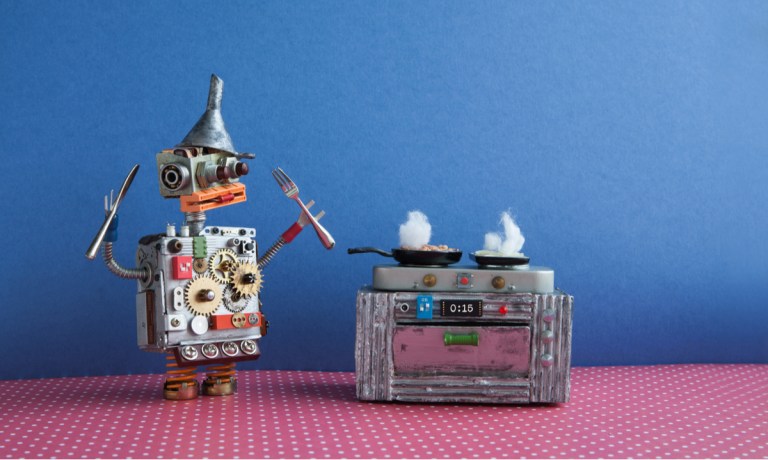
The days of major national events causing backlogs in commercial foodservice establishments and absolute messes in consumers’ home kitchens may soon be behind us. As new robotic solutions emerge to automate food preparation and production, turning out large quantities of delectable treats for big parties may not be the gargantuan task it once was.
Take, for instance, the burger, a staple of any Fourth of July feast. Party hosts have long been grilling each person’s order individually, cooked to their particular level of doneness, while also asking whether or not they want cheese or perhaps if they’d even like to go meatless.
While this process will surely remain in play for those who enjoy it, there are also now robotic options in commercial kitchens, such as foodservice industry Robots-as-a-Service company Miso Robotics’ Flippy 2 robotic fry cook. It’s a development that suggests that, perhaps, it won’t be long before a home kitchen version of the technology hits the market en masse.
However, in a conversation with PYMNTS, Jake Brewer, chief strategy officer at Miso, cautioned that the rush toward new innovations could actually distract from opportunities to make the best use of existing technologies.
“It’s the old adage: One in the hand is worth two in the bush,” said Brewer. “You could always be chasing two of those two birds in the bush and never actually get them … A lot of these brands, Miso included, have several products in hand that we know work and we know solve a big problem in the industry … [Some] people are chasing that next big innovation for forever, and they never actually get their first thing off the ground.”
Read more: Robotics Could Integrate With Restaurants’ Digital Systems Within a Year
Automation could also soon transform how party hosts fix each guest’s drink to their liking. At a time when robotic bartenders have been appearing everywhere from showrooms to the Beijing Winter Olympics, Reuters recently tweeted a video of a cocktail-making robot active in a bar in Munich.
Similarly, pizza has long been a staple of large group events, and a range of technology providers have emerged to automate the pizza-making process. Take, for instance, Picnic Works, a company whose robotic pizza stations will arrive at five university campuses at the start of next school year.
See more: Kitchen Automation Turns Digital Order Volume From Challenge to Opportunity
“We’re doing something that, for a human, is not complicated — it’s just hard,” Picnic Works CEO Clayton Wood told PYMNTS in an interview last year. “It’s tedious. It requires attention to detail. When you have lightly trained workers, it’s hard for them to be consistent … So, we think pizza is a great food to automate for that reason.”
It is not only the food preparation and production that is getting a tech upgrade for the post-2020 era, but also the ordering experience, with food sellers making it increasingly easy for their customers to place catering orders.
In fall 2021, leading grocery aggregator Instacart announced the acquisition of catering software company FoodStorm. In the time since, other restaurants have announced the launch of their own digital catering businesses or upgrades to augment their existing programs.
Read more: Instacart Acquires Catering Software Company in Push to Compete With Restaurant Aggregators
Sandwich chain Subway, for instance, which has nearly 40,000 restaurants worldwide, announced a digital-focused relaunch of its catering program in May. In the process of developing this redesign, the brand learned that, while individual restaurant customers often seek out customization, catering customers tend to be looking for the convenience of pre-selected options.
See more: Subway Says Convenience Takes Priority Over Customization for Catering Customers
“Before redesigning our catering program, we invested in extensive research to understand what guests really want from catering in today’s environment,” Subway Director of Catering Jenn Saunders-Haynes said in a June interview with PYMNTS. “We … identified some key trends in catering that have helped guide our program. First, our guests are looking for simple and convenient options to make decision-making easy, which is why we’re leaning into easy order and preselected catering options.”